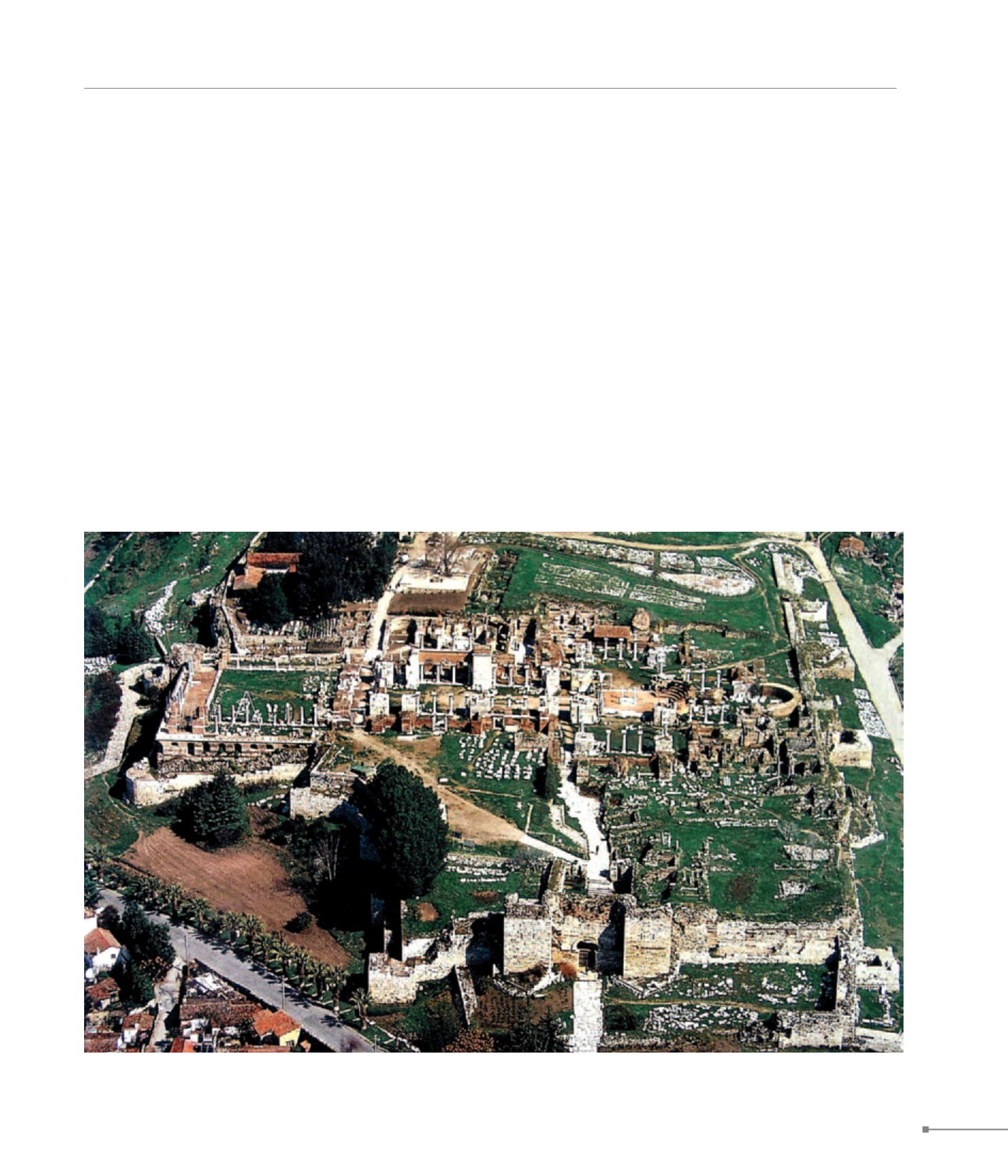
Kadikalesi. Anaia.
Selçuk. Ephesus.
COASTLINE OF ASIA MINOR AND EASTERN THRACE
301
possibly in the mid-6th c. or later, strong piers were added
to support the dome. The remains of a single-nave chapel
SE of the basilica may belong to the bishop’s palace com-
plex. There are also remnants of a tetraconch building. The
reinforcements to the walls of the citadel dated from the Early
Christian period, as did a chapel (E of the agora) that was in-
corporated into a 13th c. fortress in the Late Byzantine period.
In the early 13th c. the city’s name is mentioned as Sampson.
553.
Kadikalesi. Anaia.
Approximately 8 km from Ku
ş
adasi is the site of the ancient
city of Anaia, once a bishop’s see. During works building holi-
day accommodation remains of structures were found, which
might have belonged to the city, but they were destroyed. A
small fortress, probably dating from the 12th-13th c., survives,
with spolia from various periods. Architectural sculptures have
been transferred to Ku
ş
adasiq park. They belonged to expen-
sive buildings from the Early Christian and, primarily, from the
Mid-Byzantine periods.
554.
Scalanova, Ku
ş
adasi. Ephesus Neopolis
.
The city was founded as a port by the Genoese in the mid-
13th c. Its plan was quadrilateral with an extension to the SW.
Parts of the defensive walls survive. The tower in front of the
small island Ku
ş
Αdasi is of the same era.
555.
Sel
ç
uk. Ephesus.
In the Early Christian years Ephesus was a highly significant
city, mainly because Saint Paul the Apostle (Acts 18.18-20.38)
and Saint John Theologos lived here, and also due to the con-
vocation of the Council of Ephesus in 431. Numerous remains
555. Ephesus, Saint John Theologos complex (Έφεσος, Άγιος Ιωάννης ο Θεολόγος, το συγκρότημα)


